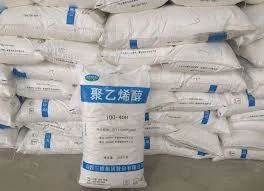The Significance of Wall Putty RDP Powder in Modern Construction
Wall putty has emerged as a crucial element in the construction and interior design industry. Specifically, the use of Redispersible Polymer Powder (RDP) in wall putty formulations has significantly enhanced the material's performance characteristics. This article explores the benefits and applications of RDP in wall putty, emphasizing its role in improving surface finish, durability, and versatility.
What is Wall Putty?
Wall putty is a fine white powder applied on walls to create a smooth, flawless surface before painting or wallpapering. It serves as an intermediary layer that enhances the aesthetic appeal of walls, ensuring a clean, even finish. In recent years, the incorporation of RDP in wall putty formulations has transformed the properties of this essential construction material.
Understanding Redispersible Polymer Powder (RDP)
RDP refers to a type of powdered polymer that can be dispersed in water after being dried. It is produced from various types of polymers and plays a crucial role in improving the performance of construction materials. When mixed with wall putty, RDP enhances the adhesion, flexibility, and water resistance of the applied layer.
Benefits of RDP in Wall Putty
1. Enhanced Adhesion One of the primary benefits of incorporating RDP into wall putty is its ability to significantly enhance adhesion. This property ensures that the putty sticks firmly to the wall surface, even under conditions of moisture or temperature fluctuations. Improved adhesion results in a longer-lasting application, reducing the need for frequent touch-ups or reapplication.
wall putty rdp powder

2. Improved Flexibility RDP endows wall putty with excellent flexibility. This characteristic is essential for enabling the putty to withstand small movements or shifts in the substrate without cracking or peeling. This flexibility is particularly beneficial in regions with fluctuating temperatures or seismic activities, where building materials may expand and contract.
3. Water Resistance RDP-modified wall putty is often more resistant to water compared to traditional formulations. This property helps mitigate issues related to dampness and mold growth, contributing to healthier indoor environments. The enhanced water resistance also protects the underlying wall materials from moisture-related damage, prolonging their lifespan.
4. Excellent Workability The inclusion of RDP improves the workability of wall putty. It allows for smoother application and easy leveling, which reduces the time and effort needed for finishing work. The ease of application benefits both professional contractors and DIY enthusiasts, making the process more efficient and satisfying.
5. Versatile Use RDP can be used in various wall putty applications, ranging from residential buildings to commercial spaces. Manufacturers can tailor the characteristics of the putty by adjusting the RDP content, allowing for customization based on specific project requirements. This versatility makes RDP-modified wall putty suitable for diverse substrate types, including concrete, cement, and drywall.
Environmental Considerations
As sustainability becomes an increasingly important focus in the construction industry, the use of RDP in wall putty aligns with eco-friendly practices. Many RDP products are formulated to be low in volatile organic compounds (VOCs), which contributes to cleaner air quality. Furthermore, RDP can improve the durability of wall finishes, reducing the need for frequent renovations and resource consumption over time.
Conclusion
The integration of Redispersible Polymer Powder in wall putty formulations has revolutionized the material's performance, providing numerous benefits that enhance its applicability in modern construction. From improved adhesion and flexibility to water resistance and workability, RDP plays a significant role in ensuring high-quality finishes in both residential and commercial projects. As the construction industry continues to evolve, the use of RDP in wall putty will undoubtedly remain a key component, reflecting the ongoing pursuit of excellence and sustainability in building practices.
-
A Comprehensive Guide to Methyl Ethyl Hydroxyethyl Cellulose: Applications and Industry InsightsNewsNov.24,2025
-
Understanding Methyl 2 Hydroxyethyl Cellulose: Uses, Benefits & Industry InsightsNewsNov.24,2025
-
Hydroxyethyl Methyl Cellulose HEMC: Industrial Uses, Benefits & Future TrendsNewsNov.23,2025
-
HEMC Cellulose: Versatile & Sustainable Industrial Polymer | YoungcelNewsNov.23,2025
-
Methyl Hydroxyethyl Cellulose: Versatile Building Block for Industry & SustainabilityNewsNov.23,2025
-
CAS 9032 42 2: Understanding Polyvinyl Alcohol's Impact on Industry & SustainabilityNewsNov.22,2025




